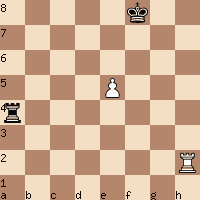In my first article for SparkChess, I asked readers to predict the finish order of the teams playing in the 2018 Final Four of College Chess (formally known as the President’s Cup). The President Cup’s award ceremony was on April 1. The winner was The University of Texas Rio Grande Valley (UTRGV), with seven-and-a-half (7.5) points out of a possible 12 points. Second place was Webster University (WU) with seven (7) points, third place was Texas Tech University (TTU) with five (5) points, and Saint Louis University (SLU) was in last place with four-and-a-half (4.5) points.
The President’s Cup is decided by game points, not match points, as stated in its rules, “The President’s Cup is a Team Round Robin scored by total individual points.” If the President’s Cup were decided by match wins, WU would have won, as it had 2.5 match wins, defeating TTU in round 1 by 2.5 to 1.5, defeating UTRGV in round 2 by 2.5 to 1.5, and tying with SLU, with 2-2, in round 3.
Congratulations to our contest winners as well: Kyler Duerson, Om Amar and Anayeli Valdez, who’ll get their prizes – a SparkChess Premium Live one year subscription!
Beginner-level chess knowledge is enough to understand some key moves
With all of the Final Four of College Chess participants being International Masters and grandmasters, as shown on the teams’ rosters, you might think that their games are too complicated for beginners to comprehend. Not true! Beginner-level chess knowledge is enough to understand some key moves. For example, the following position arose in the last round of the President’s Cup.
White has just played 53. Kf5. If you were Black (Matsenko), what would you have played in response?

TTU student Matsenko found the correct move, 53…Ra6. He probably played the move quickly, since his clock showed less than four minutes remaining. Matsenko could play the move quickly because, most likely, he has been familiar with the drawing technique since he was a child.
To draw, the defender places his rook to prevent the attacking king from advancing further, in this case placing the black rook on a6 to prevent the white king from moving to the sixth rank. This drawing technique has been known since 1777, when François-André Danican Philidor analyzed this position. As long as the white pawn is on e5, the defender shuffles his rook on the sixth rank and places his king on either e8 or e7, blocking the e-pawn’s path to promotion.
Trading rooks will not give White a win, because the black king is ideally placed for this drawn king and pawn versus king ending. Learn that drawn king and pawn versus king ending first, and then tackle the Philidor’s position. If you are a teacher, first teach the drawn “king and pawn versus king” position and then teach the Philidor’s position using this lesson plan.
Since White (Grandmaster Kamil Dragun of UTRGV) knew that progress was not possible if the pawn stayed on e5, after 53…Ra6 he played 54. e6 and the players agreed to a draw. Black will play 54…Ra1 and then perpetually check the white king from behind, along the first rank. If white prevents …Rf1 check with 55. Rf2 then 55…Ke7. Both ideas are shown in this video.
Because this game was drawn, UTRGV won its final match 3-1 over TTU. During the same third and final round, WU only tied its match 2-2 with SLU, allowing UTRGV to win the President’s Cup for the first time in its school’s history. Congratulations to The University of Texas Rio Grande Valley!
In your comments, you may offer your congratulations, share your favorite moments from the Final Four of College Chess games, tell how knowing the Philidor’s position has helped your chess results, or share a link to your favorite Philidor’s position (or other basic chess endgame) instructional video.
